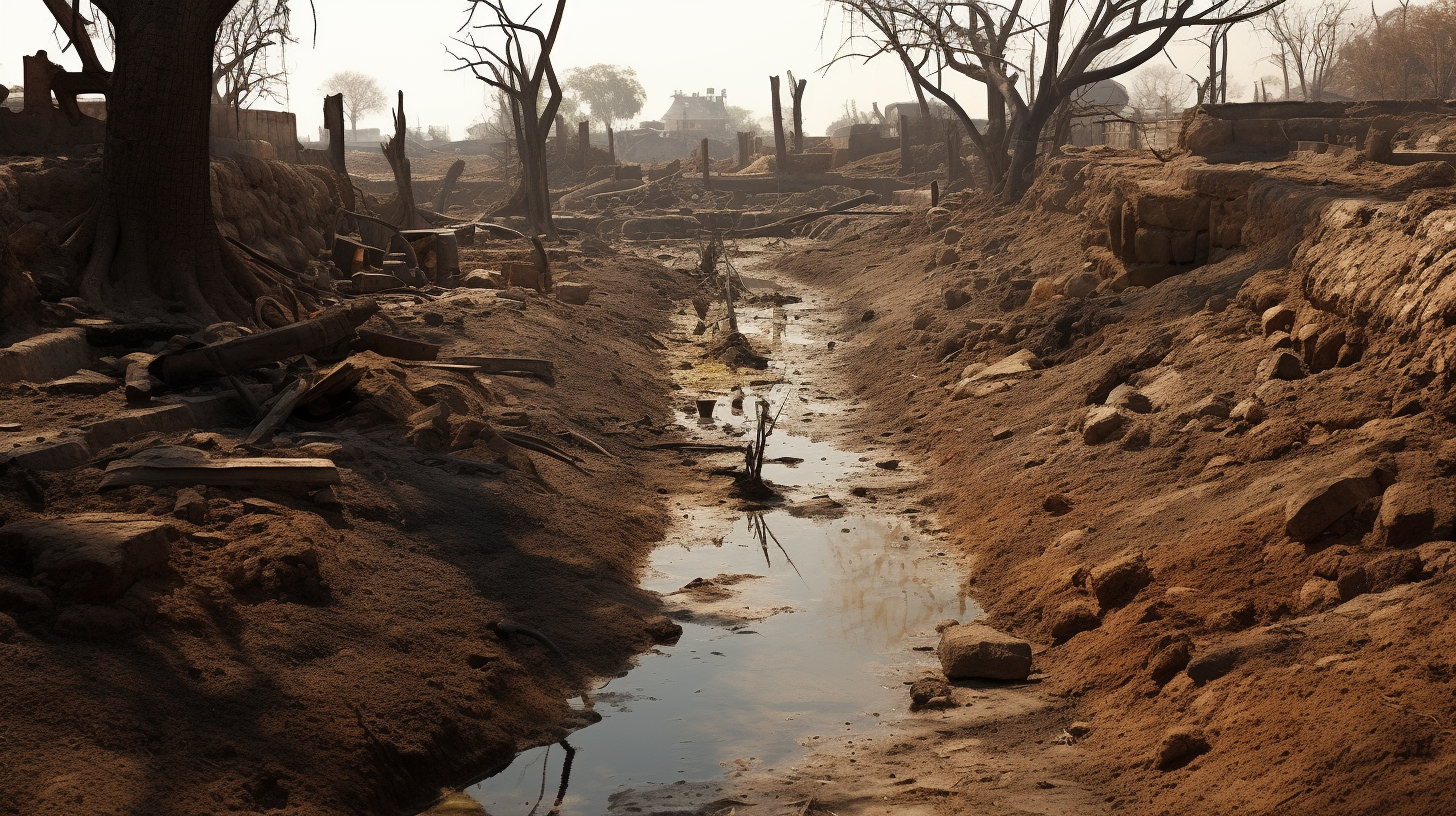In the not-so-distant past, shade was a simple, if often underappreciated, refuge. A canopy of leaves, the shadow of a building, or even the broad brim of a hat offered solace from the searing touch of the sun. Today, in a world fevered with the relentless heat of an enraged climate, shade has become an invaluable commodity, a respite more precious than the water we so desperately scour our parched landscapes to find.
Imagine a place where the sun bleeds humidity from your pores before dawn cracks the horizon. A world where every speck of shade is a battleground, where synthetic canopies are hoisted over what remains of city parks and marketplaces, while the populace shuffles like specters, flitting from shadow to shadow. In this future, or should we say, this present, architecture morphs to worship the shade virtually deifying structures that create the most cooling cover.
Our tale unfolds in the once-verdant valleys that now lay sunscorched. Here, the remnants of society grasp at threads of normalcy while the sun’s tyranny reigns. A young girl, no more than ten, pilfers through the ruins of her once shaded playground, a somber epitome of innocence lost in this scorched sanctuary. “I don’t remember the green,” she murmurs, the very notion of a world awash with hues other than browns and yellows seems like a fairy tale. Her words, although filled with the simplicity of youth, echo with the lament of generations.
Cities constructed cobweb networks of overhead tarpaulin and reflective mirrors in a bid to keep downtown cores livable. The privileged few reside in high-tech, air-conditioned bubbles, their lives a stark contrast to those humming the dirges of darkened streets below, where air conditioners and artificial oases are a dream as distant as a cloud on a clear summer’s day. The disparity is not just in lifestyle, but in survival—shade has become another divide in the long list of social inequalities.
One cannot help but draw parallels to the poignant recollections within the past article “Shadows Cast by a Thirsty Sun”. The all-too-relevant image of the Dust Bowl mirrors our current catastrophe. The irony of advancement, once thought capable of shielding us from any extremity, has been laid bare as a façade. Tech that was supposed to solve our woes now struggles to protect us from the most basic of elements: the heat of our closest star. The old ways of water conservation, heralded in hushed tones, seem like whispers of ghosts forgotten by time.
It’s a scene fit for the gloomiest works of dystopian fiction—mass migrations as the destitute and the desperate seek shade, just as much they search for water. Conflicts erupt over territories that boast a few minutes more of twilight than their barren, sunlit neighbors. The realization that the relief provided by our planet’s natural rhythms is no longer reliable sends a shudder down the spine of society. But is there hope? In our depiction of despair, it’s the ingenuity and resolve of those who endure that claw at the darkness, seeking to pull us back from the brink.
Take the story of a man, dubbed the ‘Alchemist of Shadows,’ an individual who transforms scrap and debris into contraptions that cast shade. His silent defiance against the relentless solar Siege is a testament to the power of human creativity and adaptability. Likewise, communities band together to construct communal havens, interlacing branches and scavenged materials to forge a shared relief from the relentless blaze. These refuges speak volumes about our capacity to rally, to find solace together in the face of adversity.
As the day wanes and the horizon swallows the fiery orb, a brief respite descends. The scorched earth cools, if but slightly, and the night sky unfurls above, a tapestry of cold stars mocking us with their unfeeling light. Amid the shadows that grow long and welcoming, the dreams of greenery and bubbling brooks swell within hearts starved for hope. It’s a world where every ounce of shade is a sanctuary, a fleeting escape from the sunscorched reality of our making.
In these desolate lands, the worth of respite found within darkness is immeasurable, and the tales spun under the watchful eye of the moon feel all the more urgent. They are reminders, perhaps, not of the hope that is to come, but of the resilience we must muster if we are to survive another relentless day under an unforgiving sun.
